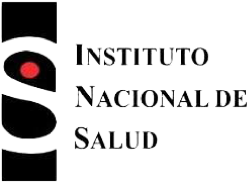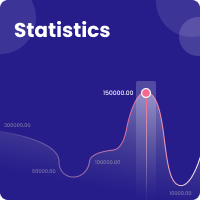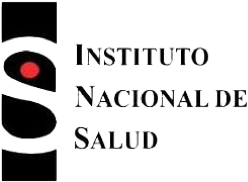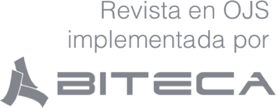Molecular characterization of Cryptococcus neoformans isolates from HIV patients, Guayaquil, Ecuador
Abstract
Introduction: Neurocryptococcosis is an opportunistic fungal infection that represents a high cost in human lives and for the economy of countries. Its causative agent, the Cryptococcus neoformans/Cryptococcus gattii species complex, has a sexual and an asexual phase, four major serotypes and seven molecular varieties with phenotypic, clinical-epidemiological and antifungal susceptibility differences.
Objective: To characterize by molecular methods clinical isolates of C. neoformans from Guayaquil, Ecuador.
Materials and methods: We determined mating types, serotypes and molecular varieties by PCR and RFLP in 27 yeast isolates previously identified as C. neoformans by conventional methods. The isolates were recovered from cerebrospinal fluid of HIV seropositive patients with neurological syndrome admitted at “Dr. José Daniel Rodríguez Maridueña” Hospital from December, 2013, to January, 2015.
Results: We established a wide prevalence of C. neoformans serotype A, MATα and genotype VNI among the studied isolates.
Conclusions: These data are similar to those obtained in other countries and the first identified by molecular characterization in Guayaquil, Ecuador. Therefore, they constitute an important contribution to the knowledge on cryptococcosis in this country.
Downloads
References
Organización Mundial de la Salud. Estadísticas sanitarias mundiales 2014. Fecha de consulta: 25 de julio de 2015. Disponible en: http://www.who.int/gho/publications/world_health_statistics/2014/es/
Idnurm A, Lin X. Rising to the challenge of multiple Cryptococcus species and the diseases they cause. Fungal Genet Biol. 2015;78:1-6. https://doi.org/10.1016/j.fgb.2015.05.002
Perfect JR, Bicanic T. Cryptococcosis diagnosis and treatment: What do we know now. Fungal Genet Biol. 2015;78:49-54. https://doi.org/10.1016/j.fgb.2014.10.003
Chiang H, Tettamanti D, Castro G. Tinta china en orina como método de diagnóstico en criptococosis diseminada asociado a VIH/sida. Estudio transversal realizado en el hospital de infectología “José Rodríguez M.” durante el año 2009. Rev Med FCM-UCSG. 2010;16:116-23.
Hagen F, Khayhan K, Theelen B, Kolecka A, Polacheck I, Sionov E, et al. Recognition of seven species in the Cryptococcus gattii/Cryptococcus neoformans species complex. Fungal Genet Biol. 2015;78:16-48. https://doi.org/10.1016/j.fgb.2015.02.009
Trilles L, Wang B, Firacative C, Lazéra M dos S, Wanke B, Meyer W. Identification of the major molecular types of Cryptococcus neoformans and C. gattii by hyperbranched rolling circle amplification. PLoS One.2014;9:e94648. https://doi.org/10.1371/journal.pone.0094648
Inglis DO, Skrzypek MS, Liaw E, Moktali V, Sherlock G, Stajich JE. Literature-based gene curation and proposed genetic nomenclature for Cryptococcus. Eukaryot Cell. 2014;13:878-83. https://doi.org/10.1128/EC.00083-14
Sánchez-Giler S, Zambrano-Castro D, Martínez-Machín GF, Fernández-Andreu CM, Illnait-Zaragozí MT. Neurocriptococosis en el contexto de la infección con el VIH en Guayaquil, Ecuador. Rev Cubana Med Trop. 2016;68.
Carvalho VG, Terceti MS, Dias ALT, Paula CR, Lyon JP, Siqueira AM de, et al. Serotype and mating type characterization of Cryptococcus neoformans by multiplex PCR. Rev Inst Med Trop Sao Paulo. 2007;49:207-10. https://doi.org/10.1590/S0036-46652007000400002
Meyer W, Castañeda A, Jackson S, Huynh M, Castañeda E, Arechavala A, et al. Molecular typing of IberoAmerican Cryptococcus neoformans isolates. Emerg Infect Dis. 2003;9:189-95. https://doi.org/10.3201/eid0902.020246
Illnait-Zaragozí MT, Martínez-Machín GF, Fernández-Andreu CM, Perurena-Lancha MR, Hagen F, Meis JF. Cryptococcus and cryptococcosis in Cuba. A minireview. Mycoses. 2014;57:707-17. https://doi.org/10.1111/myc.12275
Cogliati M. Global molecular epidemiology of Cryptococcus neoformans and Cryptococcus gattii: An atlas of the molecular types. Scientifica (Cairo). 2013;2013:675213. https://doi.org/10.1155/2013/675213
Ministerio de Salud Pública. Ministra de Salud inaugurará área de consulta externa para pacientes con VIH en Guayaquil. Fecha de consulta: 25 de abril de 2015. Disponible en: http://instituciones.msp.gob.ec/cz8/index.php/component/content/?view=featured
Alspaugh JA. Virulence mechanisms and Cryptococcus neoformans pathogenesis. Fungal Genet Biol. 2015;78:55-8. https://doi.org/10.1016/j.fgb.2014.09.004
La Hoz RM, Pappas PG. Cryptococcal infections: Changing epidemiology and implications for therapy. Drugs. 2013;73:495-504. https://doi.org/10.1007/s40265-013-0037-z
Hagen F, Ceresini PC, Polacheck I, Ma H, van Nieuwerburgh F, Gabaldón T, et al. Ancient dispersal of the human fungal pathogen Cryptococcus gattii from the Amazon rainforest. PloS One. 2013;8:e71148. https://doi.org/10.1371/journal.pone.0071148
Espinel-Ingroff A, Chowdhary A, Cuenca-Estrella M, Fothergill A, Fuller J, Hagen F, et al. Cryptococcus neoformans-Cryptococcus gattii species complex: An international study of wild-type susceptibility endpoint distributions and epidemiological cutoff values for amphotericin b and flucytosine. Antimicrob Agents Chemother. 2012;56:3107-13. https://doi.org/10.1128/AAC.06252-11
Espinel-Ingroff A, Aller AI, Cantón E, Castañón-Olivares LR, Chowdhary A, Córdoba S, et al. Cryptococcus neoformans-Cryptococcus gattii species complex: An international study of wild-type susceptibility endpoint distributions and epidemiological cutoff values for fluconazole, itraconazole, posaconazole, and voriconazole. Antimicrob Agents Chemother. 2012;56:5898-906. https://doi.org/10.1128/AAC.01115-12
Bovers M, Hagen F, Boekhout T. Diversity of the Cryptococcus neoformans-Cryptococcus gattii species complex. Rev Iberoam Micol. 2008;25:S4-12.
Wengenack NL, Binnicker MJ. Fungal molecular diagnostics. Clin Chest Med. 2009;30:391-408. https://doi.org/10.1016/j.ccm.2009.02.014
Kidd SE, Chow Y, Mak S, Bach PJ, Chen H, Hingston AO, et al. Characterization of environmental sources of the human and animal pathogen Cryptococcus gattii in British Columbia, Canada, and the Pacific Northwest of the United States. Appl Environ Microbiol. 2007;73:1433-43. https://doi.org/10.1128/AEM.01330-06
Sidrim JJ, Costa AK, Cordeiro RA, Brilhante RS, Moura FE, Castelo-Branco DS, et al. Molecular methods for the diagnosis and characterization of Cryptococcus: A review. Can J Microbiol. 2010;56:445-58. https://doi.org/10.1139/w10-030
Park SH, Kim M, Joo SI, Hwang SM. Molecular epidemiology of clinical Cryptococcus neoformans isolates in Seoul, Korea. Mycobiology. 2014;42:73-8. https://doi.org/10.5941/MYCO.2014.42.1.73
Jain N, Wickes BL, Keller SM, Fu J, Casadevall A, Jain P, et al. Molecular epidemiology of clinical Cryptococcus neoformans strains from India. J Clin Microbiol. 2005;43:5733-42. https://doi.org/10.1128/JCM.43.11.5733-5742.2005
Sánchez A, Escandón P, Castañeda E. Determinación in vitro de la actividad de los factores asociados con la virulencia de aislamientos clínicos del complejo Cryptococcus neoformans. Rev Iberoam Micol. 2008;25:145-9. https://doi.org/10.1016/S1130-1406(08)70034-2
Igreja RP, Santos-Lazéra MD, Wanke B, Gutiérrez-Galhardo MC, Kidd SE, Meyer W. Molecular epidemiology of Cryptococcus neoformans isolates from AIDS patients of the Brazilian city, Rio de Janeiro. Med Mycol. 2004. https://doi.org/10.1080/13693780310001644743
Delgado AC, Taguchi H, Mikami Y, Myiajy M, Villares MC, Moretti ML. Human cryptococcosis: Relationship of environmental and clinical strains of Cryptococcus neoformans var. neoformans from urban and rural areas. Mycopathologia. 2005;159:7-11. https://doi.org/10.1007/s11046-004-9618-4
Da Silva BK, Freire AK, Dos Santos Bentes A, De Lima Sampaio I, Oliveira Santos L, Silva Dos Santos M, et al. Characterization of clinical isolates of the Cryptococcus neoformans-Cryptococcus gattii species complex from the Amazonas State in Brazil. Rev Iberoam Micol. 2012;29:40-3. https://doi.org/10.1016/j.riam.2011.05.003
Some similar items:
- Carolina Firacative, Germán Torres, María Claudia Rodríguez, Patricia Escandón, First environmental isolation of Cryptococcus gattii serotype B, from Cúcuta, Colombia , Biomedica: Vol. 31 No. 1 (2011)
- Patricia Escandón, Elizabeth Quintero, Diana Granados, Sandra Huérfano, Alejandro Ruiz, Elizabeth Castañeda, Isolation of Cryptococcus gattii serotype B from detritus of Eucalyptus trees in Colombia. , Biomedica: Vol. 25 No. 3 (2005)
- Claudia Castro, Alba Ricardo, Angie Zabaleta, Claudia Llerena, Gloria Puerto, Characterization of clinical isolates of Mycobacterium tuberculosis from HIV positive individuals in Colombia, 2012 , Biomedica: Vol. 37 No. 1 (2017)
- Amalia Girón-Callejas, Ricardo Mendizabal-Burastero, Elizabeth Yax, Axel Martínez, Carlos Mejía-Villatoro, Optimizing resources to reduce costs to determine HIV viral load in limited resources settings , Biomedica: Vol. 37 No. 4 (2017)
- Patricia Jiménez, Karina Calvopiña, Diana Herrera, Carlos Rojas, Laura Pérez-Lago, Marcelo Grijalva, Remedios Guna, Darío García-de Viedma, Identification of the Mycobacterium tuberculosis Beijing lineage in Ecuador , Biomedica: Vol. 37 No. 2 (2017)
- Federico Rodríguez-Vega, Miguel Botero, Jorge Alberto Cortés, Ángela Tobón, Pathological findings in patients with HIV infection and lymphadenopathies , Biomedica: Vol. 37 No. 1 (2017)
- Jazzmín Arrivillaga-Henríquez, Sandra Enríquez, Vanessa Romero, Gustavo Echeverría, Jorge Pérez-Barrera, Ana Poveda, Juan-Carlos Navarro, Alon Warburg, Washington Benítez, Eco-epidemiological aspects, natural detection and molecular identification of Leishmania spp. in Lutzomyia reburra, Lutzomyia barrettoi majuscula and Lutzomyia trapidoi , Biomedica: Vol. 37 No. Sup. 2 (2017): Suplemento 2, Entomología médica, 2017
- José Moreno-Montoya, Ana M. Barragán, Margin Martínez, Amanda Rodríguez, Ángela Carmela González, Quality of life and perceived social support in people with HIV in Bogotá, Colombia , Biomedica: Vol. 38 No. 4 (2018)
- Giovani Marcelo Ramón, Rodolfo Pérez, Pablo Jarrín, Francisco Campos-Rivadeneira and Roberto Levi- Castillo: Their lives and contributions to the study of mosquitoes (Diptera: Culicidae) in Ecuador , Biomedica: Vol. 39 No. Sp. 1 (2019): Suplemento 1, Microbiología médica, mayo
- Luis Solórzano-Alava, Francisco Sánchez-Amador, Talia Valverde, Angiostrongylus (Parastrongylus) cantonensis on intermediate and definitive hosts in Ecuador, 2014-2017 , Biomedica: Vol. 39 No. 2 (2019)
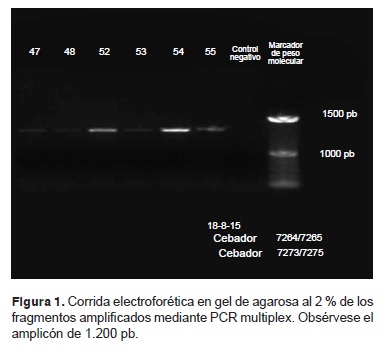
| Article metrics | |
|---|---|
| Abstract views | |
| Galley vies | |
| PDF Views | |
| HTML views | |
| Other views | |

